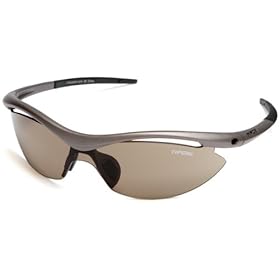Last week, as fall began to approach and the weather took a turn for the cooler, we discussed recommendations for what to wear during your commute - on a normal day. But as people in Ohio like to say about the weather: "if you don't like the weather here, wait a minute." And nothing is worse than getting caught in the rain or worse while riding when you're not prepared.
So let's take a look at some good ways to be prepared for wet weather, particularly in the fall. Wet weather in the summer isn't that big a deal. So it rains, so you get a bit wet, and it feels pretty good. It's hot out, and a little rain doesn't bother you.
Not so in the fall. It's getting cooler, and if you're not careful you could end up getting sick during your commute, which sort of does in the whole goal of staying healthy by riding to work. No, the fall is a time when you want to keep dry as much as possible.
There are two contingencies to prepare for in this regard:
- You start your ride when it's not raining and it starts to rain.
- You start your ride in the rain.
The first contingency - you start your ride when it's not raining and it starts to rain - is easily solved by bringing some rain gear with you on your ride. Waterproof panniers or another waterproof bag are the easiest way to accomplish this. Toss a poncho, some rain pants, and an extra pair of socks into your bag and you're ready to avoid the elements no matter when they pop up.

I personally use a rain cape instead of a standard poncho. Not that popular (yet!) in the US, a rain cape is basically a poncho, but as you can see from the picture to the right, it does NOT open on the side and it has finger/hand holds to allow you to cover your handlebars. The model I have also has a waist band to keep the cape from flapping up behind you as you ride (hard to do with a standard poncho). This site has more on rain capes.
But for avoiding the rain when you know it's coming, nothing beats a good rain suit. These are easily found at a lot of places and require little in the way of specialization - it's just a rubber or plastic suit that fits over your clothes. I wear a Columbia Sportswear Ibex Rain Parka and Pants
. They're cheap but do a great job of shucking the water.
As for footwear, keep in mind that I do not have clipless pedals, so I generally throw on a pair of hiking boots. Not only does this keep my feet warm, but it keeps them dry. And if I have to walk the bike at all, which does sometimes happen, I am all set. And having a higher heel than normal shoes helps keep water from running into them and getting my feet wet.
I've heard good things about helmet covers, but having short hair I rarely worry about this. The rain cape has a hood, which easily fits under my helmet. And I always carry a small towel with me on my bike so that I can quickly dry off if I need to - whether it's sweat or rain.
Gloves are a key item in the rain. Even a cool rain can make your hands very cold when you're wet and the wind is rushing past them. I recommend wearing full gloves in the rain, especially at this time of year.

The final item I'll mention is a pair of good glasses. A quality pair of cycling glasses is one of the few nods to standard cycling gear I make. If you've ever been riding and gotten a rain drop square in the eye, you'll know why. Good cycling glasses wrap around the eyes and make it nearly impossible for water to get in. I personally use a pair of Tifosi Slip Sunglasses.
Note - you'll find that cycling glasses fog up when you come to a stop at times. I find that pulling them a bit further out on your nose when you come to a stop helps avoid this problem, then as you take off just shove them back up on your face and you're ready to fly again.
Next week, we'll talk about gear for your bike - including lights and fenders.
People, not speed.
Those cycling glasses protects you from sunlight and harmful UV rays.
ReplyDelete